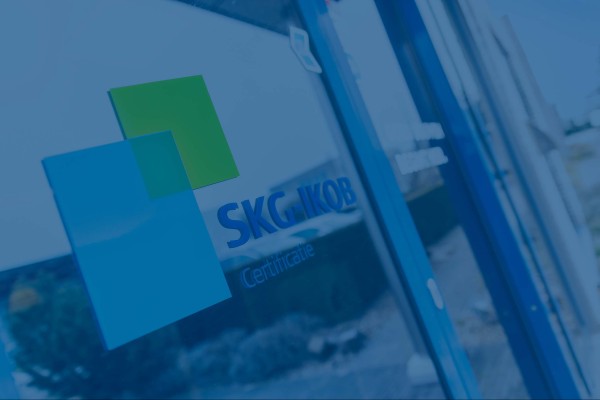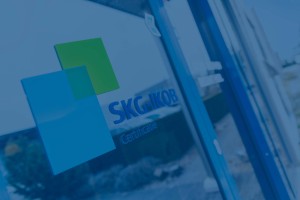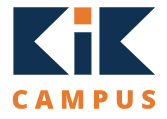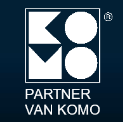Management system certification
With management system certification, you demonstrate that the development of your way of working is high on your agenda. management system certification means that we assess your organization with respect to quality management based on ISO, VCA, CSR. This helps to monitor and optimize customer satisfaction.
We can help you
Call 088 244 01 00
Good building starts with SKG-IKOB
Quality
Quality gains value based on established characteristics and properties, and we like to crown that with a certificate. SKG-IKOB certifies management systems for quality, safety and sustainability.
What is NEN-EN-ISO 9001?
NEN-EN-ISO 9001 is the worldwide standard for quality management. With the certificate, you show your customers that what and how you produce and deliver is continuously evolving. This strengthens your chances on the market while improving the processes in your organization.
What are the benefits of the certificate?
Obtaining and maintaining ISO 9001 certification has many benefits, including:
- Greater customer satisfaction
- Better procurement position
- Controlling product quality
- Working more efficiently and effectively
- Reduced failure costs
How does ISO certification work?
Management system certification has a three-year certification cycle. Depending on the certification year, an initial, periodic or recertification audit is relevant for you.
If you are not yet certified, we start with the initial audit in two phases. We examine whether your documented quality management meets the ISO 9001 standard.
Then we determine whether your management system is sufficiently implemented and effective.
At most one year after the initial audit, we conduct the first periodic audit and the second one about a year after that. We assess whether your management system is continuously functioning and improving.
At least three months before the validity of your certificate expires, we assess all components of the scheme in a recertification audit. Possibly in two stages if a lot has changed in the meantime. We then conduct another periodic audit two years in a row.
Read more about the process here.
Who can I ask for more information from?
For more information, please contact
Safety
A construction site free of occupational hazards has been on the agenda of construction parties for decades. Continuous attention remains essential because accidents continue to occur. SKG-IKOB supports contractors with SCC certification and the Safety Ladder to increase safety on construction sites.
What is SCC?
Education, awareness, internal checks, LMRA (Last Minute Risk Analysis) checks and tool inspections; all contribute to risk control. The VCA: Safety, Health and Environment Checklist for Contractors promotes safe and healthy working in the construction industry. This is in the interest of your employees and your clients, who are increasingly requiring this SCC certificate for the work you do for them.
SKG-IKOB offers two certificates:
- SCC* certificate:
1. For companies not acting as main contractors.
2. Aimed at direct control of safety, health and environmental activities on the shop floor, i.e. at the executive level.
- SCC** certificate:
1. For companies that act as main contractors and work with subcontractors.
2. Are concerned with policy, structure and planning on safety, health and environment, in addition to the executive level.
How does SCC certification work?
Management system certification has a three-year certification cycle. Depending on the certification year, an initial, periodic or recertification audit is relevant for you.
If you are not yet certified, we start with the initial audit in two phases. We examine whether your documented quality management meets the SCC standard.
Then we determine whether your management system is sufficiently implemented and effective.
At most one year after the initial audit, we conduct the first periodic audit and the second one about a year after that. We assess whether your management system is continuously functioning and improving.
At least three months before the validity of your certificate expires, we assess all components of the scheme in a recertification audit. Possibly in two stages if a lot has changed in the meantime. We then conduct another periodic audit two years in a row.
Read more about the process here.
What is the Safety Ladder?
Is safety on and around construction sites high on your agenda? Do you only provide the technical means, or do you also make employees aware of the risks? With the Safety Ladder, safety awareness among personnel becomes transparent and improves. This reduces the risk of accidents.
Safety awareness is a mandatory component in many tenders and contracts in the construction and infrastructure sector. The Safety Culture Ladder is a certification scheme to assess, measure and continuously improve safety awareness and consciously safe actions. It is managed by the NEN. Together with SKG-IKOB, you can properly introduce the Safety Ladder in your company.
This leaflet provides more information about the safety ladder.
Who can I ask for more information from?
For more information, please contact
Environment
Construction activities have a major impact on the environment and society; material use, construction and demolition waste, harmful substances, CO2 emissions. SKG-IKOB is your partner to ensure the sustainability of your environmental policy with certification.
What is ISO 14001?
The certification of the international environmental management standard ISO 14001 demonstrates to your customers that you are continuously improving your organization's environmental performance. The certification scheme lays down the ground rules for certification.
Method of ISO certification
In today's competitive marketplace, the pursuit of quality and efficiency is critical to an organization's success. An ISO certification, such as ISO 9001 certification, is a recognition that sets a company apart in the field of quality management. In this article, we will explore the many benefits of ISO certification, including:
- Increased operational efficiency
- Improved customer satisfaction
- Meeting legal and regulatory requirements
- Access to new markets
We will also explain the process of obtaining ISO certification and compare it to other certifications in the industry, such as ISO 14001 for environmental management.
Why ISO Certification
Obtaining ISO certification is a strategic step that lays a strong foundation for sustainable business management. Here are some reasons why ISO certification is important:
- Quality improvement: It helps identify and improve the organization's core processes.
- Customer satisfaction: Customers have more confidence in companies that are certified, leading to improved customer satisfaction.
- Competitive advantage: It provides an edge in tenders and other business opportunities.
- Regulatory compliance: It ensures that your business meets the legal and regulatory requirements of the industry.
- Efficiency and Productivity: By streamlining processes, it increases organizational efficiency and productivity.
ISO certification is not only a quality indicator but also a reflection of an organization's commitment to continuous improvement and customer satisfaction.
The Process of ISO Certification and Audit Preparation.
The path to ISO certification begins with a thorough understanding of the required standards. Here are the steps involved in obtaining ISO certification:
- Preparation: Choose the relevant ISO standard and prepare your organization for certification.
- Internal Audit: Assess current processes and identify areas for improvement.
- Implementation: Implement necessary improvements to meet standards.
- External Audit: An independent audit by a recognized certification body.
- Certification: Upon successful completion of the audit, you will receive ISO certification.
These steps provide a structured approach to improve quality and efficiency within your organization and achieve ISO certification.
Comparison with Other Certificates
While ISO certification provides a general standard of quality, other certifications focus on specific aspects or industries. Industry-specific certificates often focus on specific challenges or regulations within a particular industry.
It is essential to choose the right certification that fits your organization's needs and goals. Comparing ISO certification with other certifications provides insight into the unique benefits it offers, and helps make an informed decision for improving your business processes and meeting industry standards.
How to Get Started with ISO Certification
The path to ISO certification is a structured journey that requires your organization to meet certain standards. Here are more detailed steps to get you started:
- Select the Right Standard: Choose the ISO standard relevant to your business sector and objectives.
- Preparation: Prepare your organization by gathering the necessary documentation and assembling an audit team.
- Internal Audit: Conduct an internal audit to assess where your organization stands in terms of compliance.
- Gap Analysis: Identify gaps and areas for improvement to meet quality management system standards.
- Implementation: Work on the areas for improvement, adjust processes and train your team to meet the set standards.
- External Audit: Schedule an external audit with a recognized certification body to review your preparation.
- Certification: Upon successful audit, your organization will receive ISO certification, an important milestone on the road to business excellence. ISO certification is an essential tool for demonstrating your commitment to quality to customers and suppliers.
By following these steps, you will ensure thorough preparation and approach the ISO certification process in a structured and informed manner.
Conclusion
Achieving ISO certification is a milestone that underscores your organization's commitment to quality and continuous improvement. It offers numerous benefits that contribute to the long-term success and growth of your business.
Read more about the process here.
Who can I ask for more information from?
For more information, please contact
CSR
The construction sector and supplying industry have their own recognition scheme for corporate social responsibility: 'Building on CSR'. The scheme was developed by SKG-IKOB with industry associations and is a growth model: companies can determine their own social ambitions.
What systems do we certify?
What does the Building CSR scheme entail?
The Building CSR scheme has five themes: Governance and Management, People and Work, Customer, Environment, Society. Each theme has five stages of development. A company chooses which phase for each of the themes and which growth objectives it wants to achieve. The five phases are: Become Aware, Apply, Manage, Broaden and Excel.
What does the scheme connect to?
'Building on CSR' should particularly appeal to SMEs in the construction and supplying industries. Many companies are looking for methods to measure their operations against the yardstick of corporate social responsibility. This label highlights all aspects; as an entrepreneur, you choose the focal points yourself. The content is connected to existing regulations such as ISO 14001, OHSAS 18001 and the CO2 Performance Ladder.
Who can I ask for more information from?
For more information, please contact
Didn't find what you were looking for?
Try our smart filter. Here you search the website by any topic and find out what SKG-IKOB does and knows within this.
Latest News
We will keep you informed of all developments in the industry

Further information on Safety Culture Ladder requirements.
In addition to and in nuance to our earlier post, we would like to give you some further information regarding the requirements of the Safety Culture Ladder (SCL). If you would like further information, please check here to see if the Safety Culture Ladder may be applicable to your company.

From Jan. 1, 2022, the Safety Culture Ladder will be mandatory
Unfortunately, many industrial accidents still occur each year due to unsafe practices. It is important to focus within your company on consciously acting safely. Certify your company using the safety culture ladder (SCL). This is an assessment method to measure safety awareness and conscious safe action in your company. As of Jan. 1, 2022, the SCL is mandatory for many organizations within the construction industry. Now there are renewed agreements if a company does not have the required SCL proof on January 1. SKG-IKOB helps you properly introduce the Safety Culture Ladder in your company.
Our colleagues will be happy to help you






